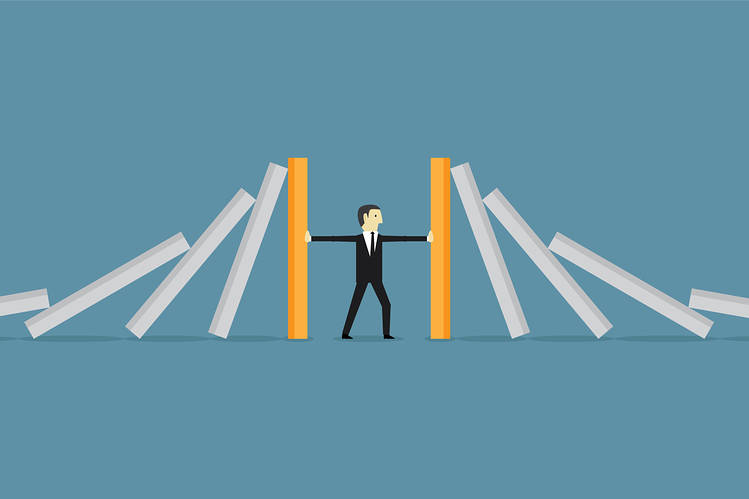Most people involved in businesses and commerce in Kashmir are sure that consumers are increasingly losing the power and will to spend money. There is a growing consensus that the purchasing power is long gone and most of the spending is strictly need-based.
This is a classic example of an economic recession and Kashmir appears to be at the brink of an economic crisis.
In the absence of a strong bailout, repeatedly sought by Kashmir’s business community and ignored by the government, the economy is now slithering into an abyss.
Kashmir’s long economic winter began in September 2014 when rains continued over Kashmir for days without a break. The streams and rivers swelled and weak embankments cracked, flooding residential neighbourhoods and economic heartlands.
For almost six months after the flood had receded, the economic activities remained at halt and the restart – again in the absence of an effective bailout process – was a slow affair. It was the first hit to an economy that, in all senses, can be described as archaic.
Then year after year – without a pause – Kashmir’s economy faced a new crisis: a summer agitation in 2016; an uncertainty of another agitation in 2017; a year of law and order volatility in 2018; unprecedented communication blackout and curfew in 2019; the first wave of COVID19 pandemic in 2020 and the second wave in 2021.
In July 2020, Kashmir Chamber of Commerce and Industries had made a preliminary loss assessment of a colossal Rs 40,000 crore. In December 2021, the Chamber’s loss estimate was Rs 50,000 crore.
By the time the calendars moved on to 2022, the economic instability and possibility of recession in Kashmir had reached a point of no return and every sector – from a small-time retailer to major investments – is now bearing the brunt.
Take for example Nazir Ahmad, a milkman from Magam town, who distributes milk to households in Srinagar and also runs a milk-and-cheese shop. His assessment is similar to those of other day-to-day businesses: people are not spending enough.
Ahmad’s assessment is grim based ominously on his sales getting limited to milk, which still remains a necessity. Very few people, he observes, are purchasing cheese and curd, which appears to have gone up on the luxury list.
This grim assessment about the daily essentials of life comes in the backdrop of dairy owners spilling milk into gutters in February and March this year when they were frustrated and shocked by the lack of demand in the market.
The decrease in the spending is now impacting every business – from a tea vendor who now sells fewer cups a day to construction businesses going slow to grocery sellers making abysmal sales. The construction boom of the past decades – which saw Srinagar’s peripheries expanding deep across the borders of Baramulla, Budgam, Pulwama and Ganderbal districts – has, for sure, come to an abrupt halt, which has left thousands of migrant labourers, who enjoyed considerably good working atmosphere and comparatively better remuneration, without work for days at a stretch.
The slowdown of any one sector is now making a meltdown effect on other sectors.
The crisis is so severe that even the acts of charity and donations, which Kashmiris would do as part of a tradition, are facing a slowdown and the charity organisations – which proved to be of great importance during the time of past crises – are announcing drying up of financial resources.
Kashmir’s economy is broadly divided into two segments: one based in urban areas, like in Srinagar, which is mainly service-based and a part of which is dependent on government jobs. The urban economy is non-agricultural and with the services sector facing a severe brunt during the COVID19 years, this segment of the economy is flailing.
The COVID19 years have been unprecedentedly nightmarish when the urban unemployment rate in Jammu and Kashmir, according to a report prepared by the Union Ministry of Statistic and Programme Implementation, had reached 46.3 percent for the 15-29 age group. This rate is almost double than what was prevalent in the United States during the height of the Great Depression in 1933 when 24.9 percent of its total workforce was unemployed.
The second segment of Kashmir economy is based in rural areas and revolves around the troika of agriculture, horticulture and livestock farming. This segment has, however, also come under tremendous strain due to adverse climatic conditions which are having a ravaging effect.
NITI Aayog, an advisory body which replaced India’s Planning Commission, states that the low productivity in agriculture and allied sectors – which supports livelihood of 80 percent of the population – has impeded employment and income generation in Jammu and Kashmir.
The Aayog had suggested that Jammu and Kashmir should shift its agriculture development strategy from food security mode to the value addition mode. Instead, the situation has worsened for farmers who were advised earlier this year to avoid planting paddy due to non-availability of the irrigation water in the face of unrelenting heat waves.
In such a troubling scenario, the burden of heavy tax regimes has further dampened the possibility of the economic recovery. The tax collection during 2021-22 was exceptionally high as the government collected Rs 15,179.42 crore of indirect taxes like GST, excise duty, stamps, and tax on motor spirits, compared to 12,105.95 crore during previous financial year.
While the cost of living is growing exponentially and the rupee is losing its purchasing power, the economy of Kashmir needs a well-planned and effective bailout programme and tax exemptions.
The region is on the cusp of an imminent economic crash and the telltale signs are all over. The administration should realize that the region’s economy is gasping for help. The money coming from the tourism sector is not enough and that sector itself is still making up for its own deficit of the past decade, instead of allowing the money into the economic cycle.
